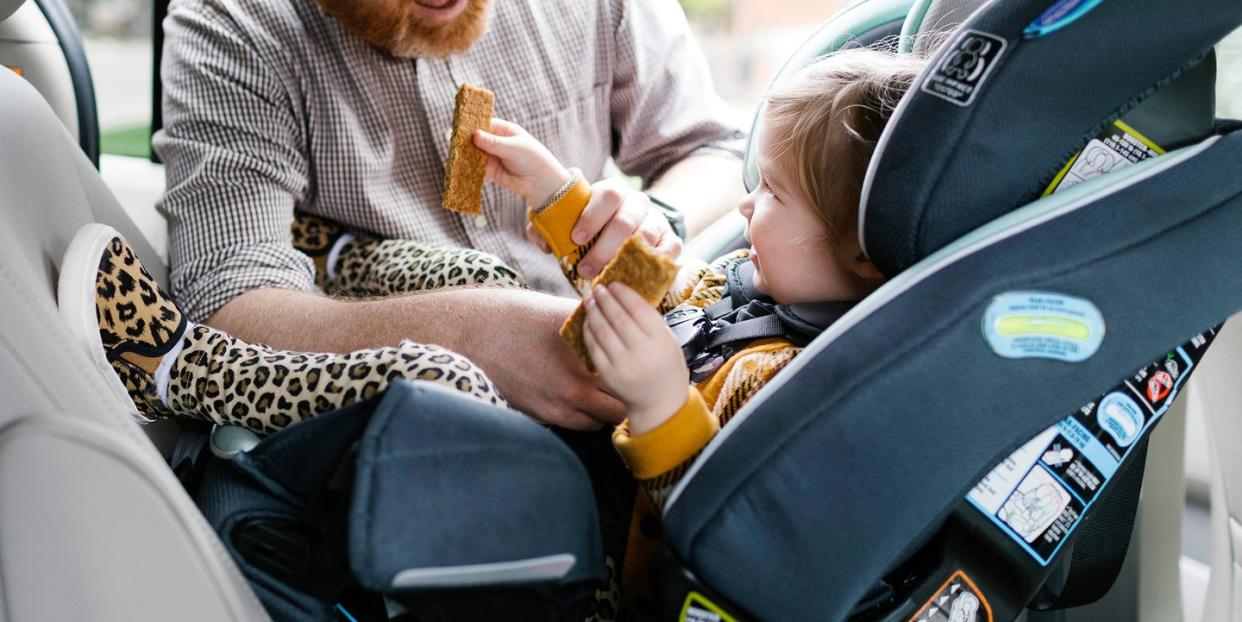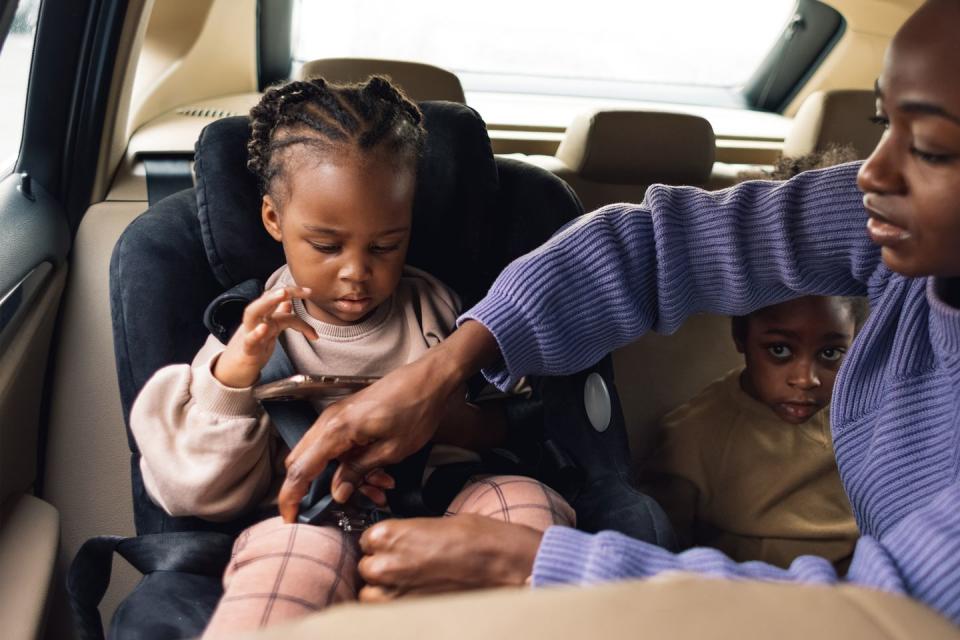Parents, This Is Your Guide to Buying the Best Car Seat for Your Child

"Hearst Magazines and Yahoo may earn commission or revenue on some items through these links."

There are popular car seats out there, but are they really the best car seat? It's tempting to rely on word-of-mouth advice when deciding on the right products for your precious baby, but after looking into the specs of different car seat models, you might form your own opinion.
When choosing the best car seat for your family, first consider safety. Then, when you've narrowed it down to the safest options in each category, you can then have fun with other details, like the ease of use, style, price, and the ability to clean and keep the car seat fresh — especially if you're opting for anything other than an infant car seat because you'll be getting years of use out of it. Luckily, we've done the work for you.
Best Car Seats of 2022
[product-summary-view] stripped
Proper Installation
The safest car seats are the ones that are installed properly. However, a 2016 National Highway Traffic Safety Administration (NHTSA) report from 2016 found that more than half of all car seats are installed incorrectly. Making things even trickier for parents, laws vary from state to state regarding the proper car seat position for your baby, based on your baby's growth stage. You'll need to brush up on the laws for your state and study up if you're planning a road trip. You'll also want to register that car seat so that in the event of any recalls, you'll know immediately.
Top Signs Your Car Seat Is Installed Incorrectly
The car seat harness is too loose. Sure, you don't want your little one to be uncomfortable during a long ride, but it's crucial to make sure the harness is in the correct position and not too loose. If you can place more than two fingers between your little one and the harness, it needs to be tightened.
Your baby is forward-facing. Until your baby is age 2 (or meets the top weight indicated by the instructions included with the car seat), your little one should ride rear-facing.
The car seat base isn't secure. Make sure when you initially install the car seat that you push down with all your weight to ensure the base is secure and snug in your backseat. The fix? Loosen up the seatbelt to reset the base into the backseat and tighten the seatbelt again.
The seatbelt looks funky. It's true — correct seatbelt routing is less intuitive than you'd want it to be, but the main thing is to make sure the shoulder belt is secure around the base of the seat, and the lap belt is the one positioned closer toward your baby. Pay careful attention to the instructions for your car seat, and keep an eye out for stickers on the seat itself that indicate exactly where the seatbelt should be positioned. The chest strap closures should be nipple level, and the crotch strap should be secure to the body. There should be no more than two fingers of space between the strap and your baby. And remember, your baby should not wear a winter coat under the straps—a thin jacket under and blankets atop.
The leveling indicators are off: Most car seats now come with some type of leveling or installation indicator. Whether it's a bubble level or a guide on the side of the seat, it's important to make a note of where it should be and where your car seat is.
You didn't install through the NHTSA's guidelines: The National Highway Traffic and Safety Administration has an in-depth checklist for installing a car seat — and it is absolutely critical to follow it.
The team at Best Products tested car seats like the Mesa and Maxi-Cosi — plus, we've spoken to multiple manufacturers and even carried our own children in these seats. We got down and dirty with them (literally, we smothered them in pudding and potato chip crumbs) to test their cleanability. We reviewed safety data from the National Highway Traffic and Safety Administration (NHTSA) and Consumer Reports to determine the performance of these seats in collision conditions. We also read hundreds of reviews and spoke to real parents who use and love these car seats to decide which seats made our list.
Car Seat Types
There are a few different types of car seats to choose from: infant, convertible, and toddler. Depending on your needs, you'll be purchasing a car seat within one of these categories.
Infant
This is the category in the car seat world where you'll find the model that you'll be taking your baby home from the hospital in. Infant car seats are rear-facing and designed to keep your precious newborn safe. While some parents choose to start with the convertible car seat and use it in infant mode, other parents choose to have an infant car seat first and then switch to the convertible option when baby grows out of it.
The cool thing about an infant car seat is that you can easily take it right out of the car with your sleeping newborn resting inside. There are plenty of stroller and car seat combos (aka travel systems) that make this transition seamless. One more thing: By the time your cute baby hits age 1, the safest thing to do is transition to a convertible car seat.
→ Read More: 8 Infant Car Seats to Bring Baby Home In
Convertible
Convertibles can typically be used from birth until 2 or 3 years of age. Some can be used up to age 10. It really just depends on the make and model. They're designed to be extended rear-facing but have the ability to face forward when your child grows out of the rear-facing stage. Usually, the rear-facing capabilities last until around 35-40 pounds.
→ Read More: The 7 Best Convertible Car Seats for a Happy Baby
Toddler
It's time for a forward-facing seat! 3-in-1 car seats are also popular in the toddler category, though the models differ. The idea is that the car seat is safe for babies and tots, but it can then transform into a booster. (Sounds pretty "convertible," right?) There are 3-in-1 (or all-in-one) seats that are perfect for toddlers, but they might also include infant and rear-facing capabilities. However, all 3-in-1 car seats offer a booster option, which is where 3-in-1 seats differ from convertible car seats.
If price is a main factor for you in your decision, it's worth noting that convertible car seats are the priciest option because they last the longest. They have all the safety and comfort features found in an infant seat, and yet they extend long beyond the range of the carrier-style car seat. Convertible seats typically feature the most bells and whistles, too, especially our posher picks on this list. Things like a one-handed headrest extension and swiveling base add to the price of these seats but trust us — they're worth it. They last for years of your child's growth, and they're actually quite an economical purchase when you consider the duration of use. If you're using it for more than one child? Even better.
→ Read More: The 7 Best Toddler Car Seats You Can Trust
Ready to shop for car seats now? Buckle up and check out our top choices!
Editor's note: This information was checked on 3 August, 2022, to assess that it was current with pricing and accuracy.
You Might Also Like